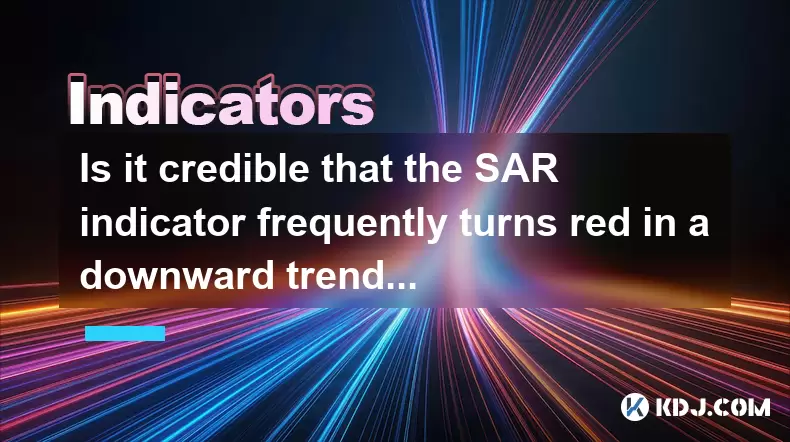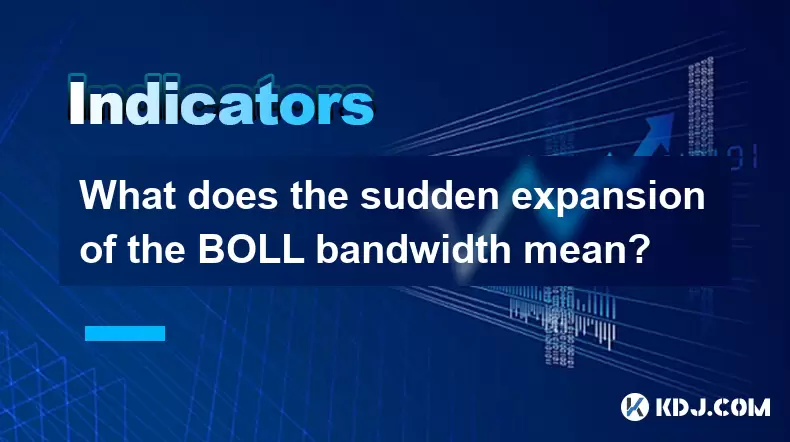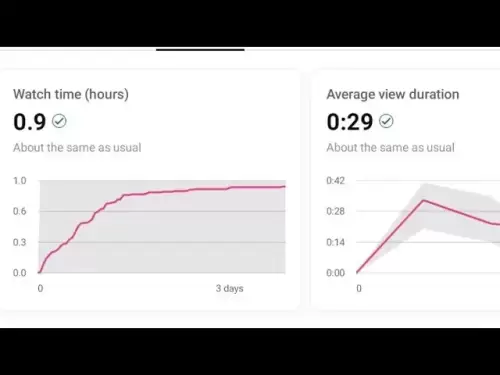-
 Bitcoin
Bitcoin $103,456.1111
0.49% -
 Ethereum
Ethereum $2,414.9631
0.02% -
 Tether USDt
Tether USDt $1.0006
0.05% -
 XRP
XRP $2.1083
0.24% -
 BNB
BNB $634.8760
-0.76% -
 Solana
Solana $139.8437
1.94% -
 USDC
USDC $0.9998
-0.01% -
 TRON
TRON $0.2737
0.97% -
 Dogecoin
Dogecoin $0.1602
0.20% -
 Cardano
Cardano $0.5737
1.08% -
 Hyperliquid
Hyperliquid $32.9779
-2.54% -
 Bitcoin Cash
Bitcoin Cash $474.8886
-1.80% -
 Sui
Sui $2.6272
-1.99% -
 Chainlink
Chainlink $12.4878
0.14% -
 UNUS SED LEO
UNUS SED LEO $8.9234
0.35% -
 Stellar
Stellar $0.2411
-0.18% -
 Avalanche
Avalanche $17.0274
-0.70% -
 Toncoin
Toncoin $2.8936
-1.11% -
 Shiba Inu
Shiba Inu $0.0...01112
-0.58% -
 Litecoin
Litecoin $82.6982
1.33% -
 Hedera
Hedera $0.1423
-0.05% -
 Monero
Monero $314.8455
3.26% -
 Ethena USDe
Ethena USDe $1.0006
0.01% -
 Polkadot
Polkadot $3.4043
1.14% -
 Dai
Dai $0.9999
0.01% -
 Bitget Token
Bitget Token $4.2848
-0.13% -
 Uniswap
Uniswap $6.8748
-5.45% -
 Pepe
Pepe $0.0...09661
0.52% -
 Pi
Pi $0.5359
1.19% -
 Aave
Aave $242.9168
-1.03%
Does the double top pattern of the Williams indicator indicate overbought risk?
A double top pattern on the Williams %R signals potential overbought reversal risks, especially when confirmed by a breakdown below support.
Jun 21, 2025 at 11:07 pm

Understanding the Williams Indicator
The Williams %R, commonly referred to as the Williams indicator, is a momentum oscillator used in technical analysis to identify overbought and oversold conditions in financial markets. It was developed by Larry Williams and typically operates on a scale from 0 to -100. When the indicator reads above -20, it suggests that the asset may be overbought, while readings below -80 suggest oversold conditions.
In the context of cryptocurrency trading, where volatility is high and trends can reverse quickly, the Williams indicator becomes especially useful for identifying potential reversal points. Traders often look for specific patterns within this indicator to make informed decisions about market entry or exit.
Key Insight: The Williams %R is not just a standalone indicator; it's most effective when combined with price action and other technical tools.
What Is a Double Top Pattern?
A double top pattern is a well-known technical analysis formation that signals a potential reversal from an uptrend to a downtrend. In the context of the Williams indicator, a double top occurs when the oscillator forms two distinct peaks near the overbought region (above -20), followed by a drop below a support level drawn between the two highs.
This pattern is significant because it indicates that despite repeated attempts to push higher, the buying pressure is weakening, and selling pressure may soon dominate. In crypto markets, where sentiment can shift rapidly, recognizing such patterns early can provide traders with strategic advantages.
- The first peak forms as the price reaches a new high, and the Williams %R hits overbought territory.
- After a pullback, the second peak forms at approximately the same level as the first, indicating resistance.
- A breakdown occurs when the indicator falls below the trough formed between the two peaks.
Important Note: A double top pattern must be confirmed by a close below the neckline (support level) to be considered valid.
How Does the Double Top Pattern Appear on the Williams Indicator?
When analyzing the Williams %R chart, a double top pattern manifests visually through two clear peaks. These peaks occur when the indicator rises to the overbought zone (near -10 or even above -5), retreats, and then retests the same area without breaking through.
For example, during a strong bullish move in Bitcoin or Ethereum, the Williams %R might rise sharply into overbought levels. If the price stalls and retraces, forming a similar high again without surpassing the previous one, a double top begins to form on the indicator.
- Look for two distinct peaks in the Williams %R line near the upper boundary (-20 or higher).
- Ensure that the second peak does not exceed the first one significantly.
- Observe a clear decline after the second peak, ideally breaking below the prior swing low.
Caution: False breakouts are common in crypto markets, so always wait for confirmation before acting on this signal.
Does the Double Top Indicate Overbought Risk?
Yes, a double top pattern on the Williams indicator does indicate overbought risk, but with important caveats. While the presence of two peaks in overbought territory suggests weakening momentum, it doesn't automatically mean a reversal will occur immediately. However, when combined with other bearish signs—such as divergence or candlestick rejection patterns—it becomes a stronger signal.
Traders should interpret the double top as a warning sign rather than a guaranteed sell signal. The key lies in how the price reacts after the formation completes. If the price fails to hold support and breaks down, it confirms the bearish bias suggested by the indicator.
- Overbought conditions alone don’t guarantee a reversal, but paired with a double top, the probability increases.
- Volume analysis can help confirm whether the selling pressure is intensifying.
- Use of stop-loss orders is essential due to the volatile nature of crypto assets.
Critical Point: The double top pattern enhances the reliability of overbought signals only when supported by other technical confluences.
How to Trade the Double Top Pattern Using the Williams Indicator
Trading the double top pattern involves several precise steps:
- Identify the first peak in the Williams %R reaching overbought territory (-20 or higher).
- Wait for the indicator to pull back, forming a valley between the two peaks.
- Confirm the second peak forming near the level of the first, showing failed momentum.
- Watch for a breakdown below the valley low, which serves as the trigger point for a short trade.
- Set a stop-loss slightly above the second peak to manage risk effectively.
- Determine a profit target based on the height of the pattern projected downward from the breakdown point.
Pro Tip: Combine this setup with a bearish candlestick pattern like a shooting star or engulfing bar for better accuracy.
Frequently Asked Questions
Q: Can the Williams %R double top pattern be used in all timeframes?
While the double top pattern can appear across various timeframes, its reliability increases on higher timeframes like the 4-hour or daily charts. Lower timeframes tend to generate more false signals due to increased noise and volatility.
Q: What if the Williams %R forms a triple top instead of a double top?
A triple top is a variation of the double top and also indicates a potential reversal. It includes three peaks at similar levels and may offer a stronger signal due to the repeated failure to break resistance.
Q: How do I distinguish a real double top from a continuation pattern on the Williams indicator?
A real double top is confirmed when the indicator breaks below the support level between the two peaks. Continuation patterns lack this breakdown and instead resume the existing trend after consolidation.
Q: Should I rely solely on the Williams %R for making trades based on the double top pattern?
No, the Williams %R should be used in conjunction with other tools such as volume indicators, moving averages, or candlestick patterns to improve the accuracy of trade signals.
Disclaimer:info@kdj.com
The information provided is not trading advice. kdj.com does not assume any responsibility for any investments made based on the information provided in this article. Cryptocurrencies are highly volatile and it is highly recommended that you invest with caution after thorough research!
If you believe that the content used on this website infringes your copyright, please contact us immediately (info@kdj.com) and we will delete it promptly.
- MAGACOIN FINANCE: The Low-Cap Crypto Set to Dominate 2025?
- 2025-06-22 04:25:12
- Trump, Wallets, and Binance: Decoding the Latest Crypto Moves
- 2025-06-22 04:25:12
- Altcoins, Social Media, and Trending Coins: What's the Buzz?
- 2025-06-22 04:45:12
- Unicorn Fart Dust, Meme Coins, and Ballpark Village: A Wild Ride in the Crypto World
- 2025-06-22 04:30:12
- ZA Miner, Cloud Mining, and Crypto Adoption: A 2025 Perspective
- 2025-06-22 04:45:12
- HBAR, BCH, and Web3 AI: What's Hot and What's Not in Crypto Right Now
- 2025-06-22 04:50:12
Related knowledge

Does the sudden contraction of ATR indicate the end of the trend?
Jun 20,2025 at 11:14pm
Understanding ATR and Its Role in Technical AnalysisThe Average True Range (ATR) is a technical indicator used to measure market volatility. Developed by J. Welles Wilder, ATR calculates the average range of price movement over a specified period, typically 14 periods. It does not indicate direction—only volatility. Traders use ATR to gauge how much an ...

Is it invalid if the DMI crosses but the ADX does not expand?
Jun 21,2025 at 09:35am
Understanding the DMI and ADX RelationshipIn technical analysis, the Directional Movement Index (DMI) consists of two lines: +DI (Positive Directional Indicator) and -DI (Negative Directional Indicator). These indicators are used to determine the direction of a trend. When +DI crosses above -DI, it is often interpreted as a bullish signal, while the opp...

How to filter false signals when the SAR indicator frequently flips?
Jun 21,2025 at 08:43pm
Understanding the SAR Indicator and Its BehaviorThe SAR (Stop and Reverse) indicator is a popular technical analysis tool used in cryptocurrency trading to identify potential reversals in price movement. It appears as a series of dots placed either above or below the price chart, signaling bullish or bearish trends. When the dots are below the price, it...

Is the trend continuation when the Williams indicator is oversold but there is no rebound?
Jun 20,2025 at 11:42pm
Understanding the Williams %R IndicatorThe Williams %R indicator, also known as the Williams Percent Range, is a momentum oscillator used in technical analysis to identify overbought and oversold levels in price movements. It typically ranges from 0 to -100, where values above -20 are considered overbought and values below -80 are considered oversold. T...

Is it credible that the SAR indicator frequently turns red in a downward trend?
Jun 22,2025 at 12:07am
What Is a Bitcoin Wallet and Why Do You Need One?A Bitcoin wallet is a digital tool that allows users to store, send, and receive Bitcoin. Unlike traditional wallets that hold physical currency, Bitcoin wallets do not actually store the cryptocurrency itself. Instead, they manage the private keys that grant access to your Bitcoin on the blockchain. Thes...

What does the sudden expansion of the BOLL bandwidth mean?
Jun 21,2025 at 01:49pm
Understanding the BOLL IndicatorThe BOLL (Bollinger Bands) indicator is a widely used technical analysis tool in cryptocurrency trading. It consists of three lines: a simple moving average (SMA) in the center, with upper and lower bands calculated based on standard deviations from that SMA. These bands dynamically adjust to price volatility. When trader...

Does the sudden contraction of ATR indicate the end of the trend?
Jun 20,2025 at 11:14pm
Understanding ATR and Its Role in Technical AnalysisThe Average True Range (ATR) is a technical indicator used to measure market volatility. Developed by J. Welles Wilder, ATR calculates the average range of price movement over a specified period, typically 14 periods. It does not indicate direction—only volatility. Traders use ATR to gauge how much an ...

Is it invalid if the DMI crosses but the ADX does not expand?
Jun 21,2025 at 09:35am
Understanding the DMI and ADX RelationshipIn technical analysis, the Directional Movement Index (DMI) consists of two lines: +DI (Positive Directional Indicator) and -DI (Negative Directional Indicator). These indicators are used to determine the direction of a trend. When +DI crosses above -DI, it is often interpreted as a bullish signal, while the opp...

How to filter false signals when the SAR indicator frequently flips?
Jun 21,2025 at 08:43pm
Understanding the SAR Indicator and Its BehaviorThe SAR (Stop and Reverse) indicator is a popular technical analysis tool used in cryptocurrency trading to identify potential reversals in price movement. It appears as a series of dots placed either above or below the price chart, signaling bullish or bearish trends. When the dots are below the price, it...

Is the trend continuation when the Williams indicator is oversold but there is no rebound?
Jun 20,2025 at 11:42pm
Understanding the Williams %R IndicatorThe Williams %R indicator, also known as the Williams Percent Range, is a momentum oscillator used in technical analysis to identify overbought and oversold levels in price movements. It typically ranges from 0 to -100, where values above -20 are considered overbought and values below -80 are considered oversold. T...

Is it credible that the SAR indicator frequently turns red in a downward trend?
Jun 22,2025 at 12:07am
What Is a Bitcoin Wallet and Why Do You Need One?A Bitcoin wallet is a digital tool that allows users to store, send, and receive Bitcoin. Unlike traditional wallets that hold physical currency, Bitcoin wallets do not actually store the cryptocurrency itself. Instead, they manage the private keys that grant access to your Bitcoin on the blockchain. Thes...

What does the sudden expansion of the BOLL bandwidth mean?
Jun 21,2025 at 01:49pm
Understanding the BOLL IndicatorThe BOLL (Bollinger Bands) indicator is a widely used technical analysis tool in cryptocurrency trading. It consists of three lines: a simple moving average (SMA) in the center, with upper and lower bands calculated based on standard deviations from that SMA. These bands dynamically adjust to price volatility. When trader...
See all articles
























































































